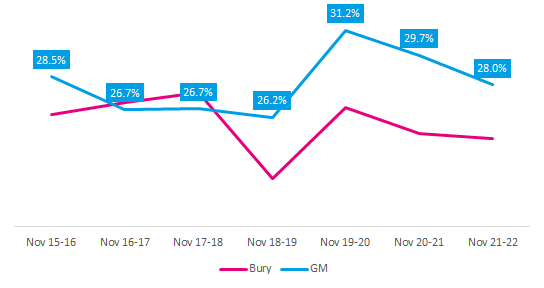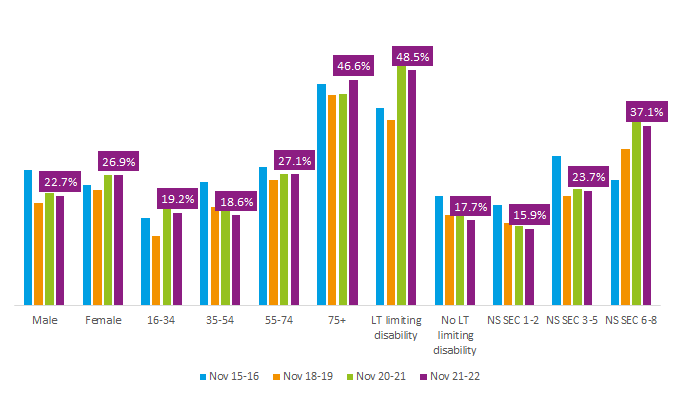Bury Adult Activity Levels 2021-22
The latest Active Lives results published by Sport England show that Bury has recovered to baseline and pre-pandemic levels for active (64.5%) and baseline for inactive (25.0%) levels.
Bury Overview
Bury has recovered to baseline and pre-pandemic levels for active (64.5%) and baseline for inactive (25.0%) levels.
Unlike GM, those from NS SEC 6-8 groups were increasing in inactivity, whilst 16-34 years were decreasing, prior to the pandemic.
However, 16-34 years, NS SEC 6-8 groups and those with a long term health condition or disability were impacted most by the pandemic. Along with females and those aged 75+ years these groups have not recovered to baseline or pre-pandemic.
Inactivity
The inactive population has only seen a small decrease in the last 12 months (-0.3%), is below baseline (-1.3%), but higher than pre-pandemic levels (+2.2%). Lower than national levels (25.8%).

Differences across demographics
Unlike GM, those from NS SEC 6-8 groups were increasing in inactivity, whilst 16-34 years were decreasing, prior to the pandemic.
However, 16-34 years, NS SEC 6-8 groups and those with a long term health condition or disability (LTHC) were impacted most by the pandemic. Along with females and those aged 75+ years these groups have not recovered to baseline or pre-pandemic.
Most have seen a decrease in the last 12 months, except those aged 75+. Despite some recovery in the last 12 months for 16-34 years and being lower than GM levels, these remain above 35-54 years in Bury. Whilst those with a LTHC are the only group above GM levels of inactivity in Bury.
Only NS SEC 1-2 and those with no long-term health condition have recovered to both baseline and pre-pandemic. With males, 55-74 years and NS SEC 3-5 groups having recovered to baseline, but not pre-pandemic.

If you have questions about this data please email: [email protected]
Published April 2023
